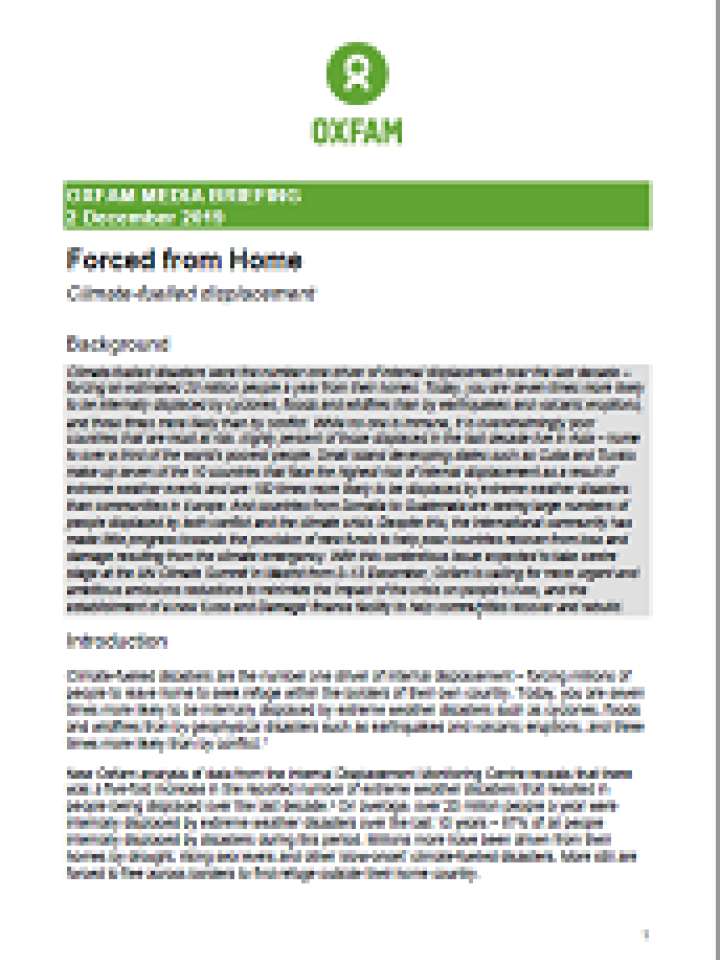Forced from home: climate-fuelled displacement
Climate-fuelled disasters were the number one driver of internal displacement over the last decade – forcing an estimated 20 million people a year from their homes. Today, you are seven times more likely to be internally displaced by cyclones, floods and wildfires than by earthquakes and volcanic eruptions, and three times more likely than by conflict.
While no one is immune, it is overwhelmingly poor countries that are most at risk. Eighty percent of those displaced in the last decade live in Asia – home to over a third of the world’s poorest people. Small island developing states such as Cuba and Tuvalu make up seven of the 10 countries that face the highest risk of internal displacement as a result of extreme weather events and are 150 times more likely to be displaced by extreme weather disasters than communities in Europe.
Countries from Somalia to Guatemala are seeing large numbers of people displaced by both conflict and the climate crisis. Despite this, the international community has made little progress towards the provision of new funds to help poor countries recover from loss and damage resulting from the climate emergency.
With this contentious issue expected to take centre stage at the UN Climate Summit in Madrid from 2–13 December, Oxfam is calling for more urgent and ambitious emissions reductions to minimize the impact of the crisis on people’s lives, and the establishment of a new ‘Loss and Damage’ finance facility to help communities recover and rebuild.
Explore further
